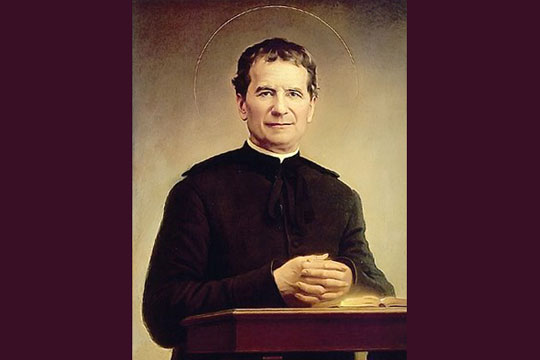
We are Easter people!
That does not mean that we celebrate Easter with a party, complete with baskets and chocolate bunnies (though I love that iconic confectionary as much as anyone). Being Easter people means that we are animated by the same kind of love that defeated death itself. We are people who see Christ still present and walking among us today—in Scripture, in the sacraments, in the works of mercy, and in one another. The hearts of Easter people are, like the Sacred Heart of Jesus, on fire with love for the world God the Father created, God the Son redeemed, and God the Spirit sanctified!
How can I help the ninth graders I am preparing for the Sacrament of Confirmation see themselves as Easter people? They enjoy hearing my stories about the saints, so I think I will introduce them to three mystics, who are perfect examples of Easter people: St. Mechtild of Magdeburg, St. Brigid of Sweden, and St. Paul the Apostle.
- St. Mechtild of Magdeburg was a 13th-century mystic and contemporary of St. Gertrude the Great. She is perhaps best known for her work, The Flowing Light of the Godhead. While I wouldn’t assign this as reading for my ninth graders, I would explain that Mechtild explains that divine love is what binds our soul to Christ. We are Easter people because we love all people, without exception. As a group, we may talk about concrete ways we can love other people, even those we may think of as “unlovable.” The works of mercy might be a good place to start.
- St. Bridget of Sweden was a 14th-century mystic who wrote a masterpiece of medieval literature called Prophecies and Revelations in which she shares a sermon about joy from an angel. It was God’s love, and God’s love alone, the angel explained, that led God to create. Our existence should be a joyful one, since we exist solely because of God’s love. Easter people are joyful. That doesn’t mean that we are happy all the time; it means that we can find God in all things, especially when times are hard. With the young people, I can lead a discussion of faith-filled practices for dealing with stress. Easter people aren’t stress-free; they just know how to find joy during stressful times.
- St. Paul the Apostle needs no introduction. Paul stresses the people in Easter people. Easter people form a singular body, and that body is Christ’s Body. Paul stresses the harmony that exists among Easter people, and it is in that harmony that we find God (Romans 15:5–6). Such harmony is the basis of solidarity that exists among Easter people. In light of that, I will explore the Catholic Social Teaching theme of solidarity with the young people.
Easter is not a season; it’s a way of life. Easter people find God in all things, because they are filled with the graces of love, joy, and harmony.
How do you help the young people you serve see themselves as Easter people?


![St. Vincent Ferrer by Giovanni Bellini (circa 1430–1516) [Public domain], via Wikimedia Commons](https://catechistsjourney.loyolapress.com/wp-content/uploads/2017/03/St-Vincent-Ferrer.jpg)


Be the first to comment